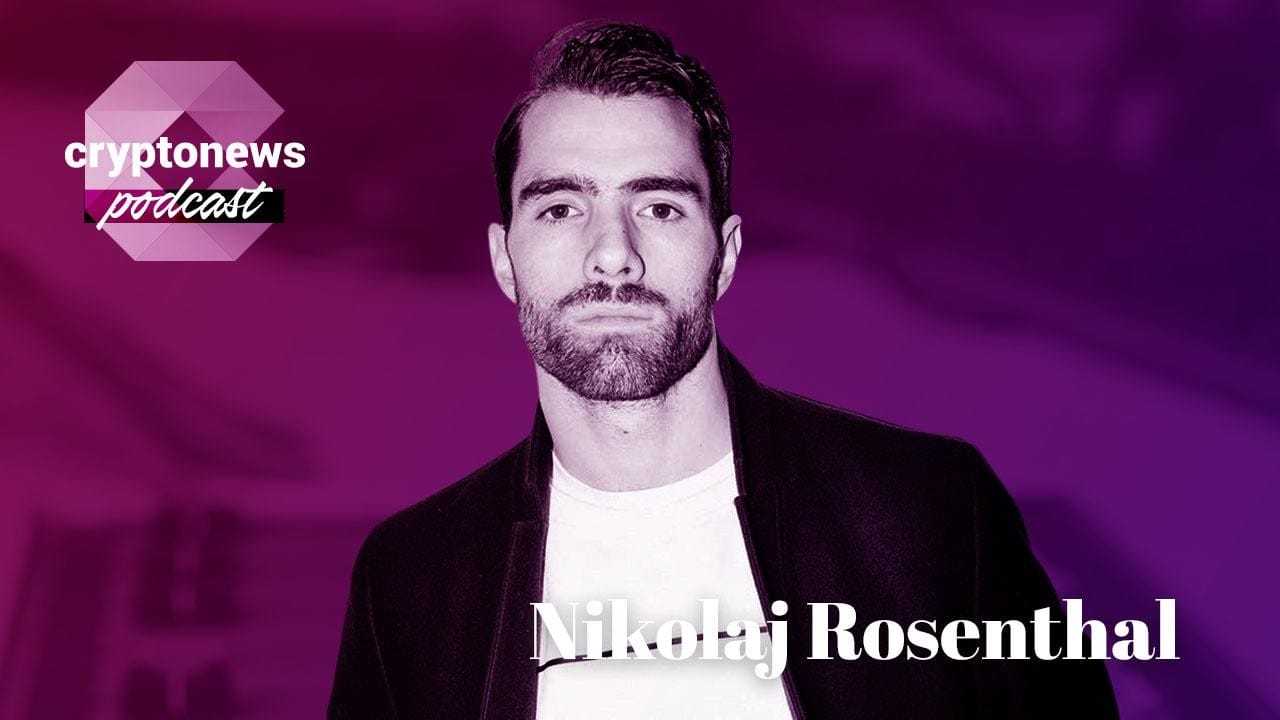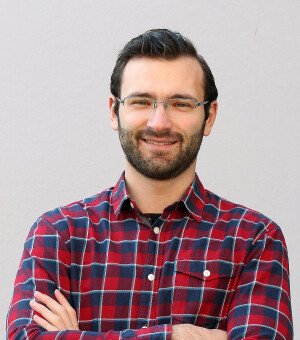Nikolaj Rosenthal, CEO of Myrmidon, on ETH, Staking-as-a-Service, Non-Custodial Staking, and the Ethereum ETF | Ep. 325

Nikolaj Rosenthal, former ice hockey star and CEO of non-custodial staking provider Myrmidon, sat down for another exclusive interview with Cryptonews Podcast host Matt Zahab.
He talked about his gradual and intentional switch from a professional sports player to a crypto entrepreneur, accepting Bitcoin as salary seven years ago, establishing a staking-as-a-service, and chains coming to Myrmidon soon.
Rosenthal told us why ETFs are useful but go against the basic crypto ethos, and how Myrmidon ensures true coin ownership.
Lastly, he discussed the pros and cons of the four staking types: which one is the most difficult but most beneficial earning-wise and which one is the least.
In this interview, Rosenthal discussed:
- being the first athlete to accept BTC as salary in 2017;
- Myrmidon, a non-custodial staking provider;
- what’s going on with Ethereum;
- the implications of Ethereum ETF;
- solo-home staking, staking-as-a-service, pooled staking, and centralized staking.
You can watch what Rosenthal told Matt in the video above or read it below.
From Hokey Player to Crypto Player
There’s a pattern in the world of sports, Rosenthal said. Players retire and then feel like they’ve lost their identity. They struggle to live outside the sports world.
Rosenthal didn’t want this happening to him, so he started spreading out career-wise early on.
Being a pro hockey player in the US or Canada pays very well. In Europe, too, a player can “make a pretty good living.” But making money post-retirement is difficult.
Rosenthal returned from the US to Europe, well aware that his career would come to its inevitable end.
Therefore, he went to study and earn his degrees from the Copenhagen Business School.
Also, in 2016, he fell “deep down the rabbit hole” of crypto through Danish Bitcoin entrepreneur Niklas Nikolajsen, who founded Bitcoin Suisse AG in 2013.
This path ultimately led to Rosenthal becoming the first athlete to accept Bitcoin as a salary in 2017.
Many would certainly think this a very strange and/or bad financial decision at the time. Bitcoin and the world of crypto were very different seven years ago, and they were perceived differently in the mainstream.
But it turned out to be an excellent decision, and there are multiple athletes today accepting their salary in crypto.
And “I definitely orange-pilled a couple of boys, that’s for sure,” Rosenthal said.
He noted how relative the term ‘early’ is. In 2016 he used to think of those who had gotten into the space in 2015 or 2013 as being early.
But now that he looks back, he was early too.
Anybody who gets in today will likely be ‘early’ for somebody entering the space in 2030, let’s say.
No Competitor for Ethereum Yet
Rosenthal eventually went on to co-found Myrmidon in 2022. It’s a non-custodial staking provider primarily focused on Ethereum.
The CEO commented that “today, Ethereum is still the biggest L1 chain out there.”
There are some layer-1 blockchains competing with it, including Solana, Avalanche, and Cardano.
But “the bottom line is that Ethereum is still the one to beat, in my view,” Rosenthal remarked.
Since the last time Rosenthal was a guest at Cryptonews Podcast back in 2021, Ethereum has undergone a number of major upgrades. And “everything went smoothly,” he said.
Congratulations to the entire #Ethereum community on a succesful Dencun upgrade on epoch 269,568.
Here are some of the most important things you need to know about the upgrade 🧵: pic.twitter.com/zQbYLS0ELg— Myrmidon Staking🦇🔊 (@Myrmidonstaking) March 14, 2024
An issue, Rosenthal argued, is that some people may not understand what an update is supposed to do, expecting it to do something else – for example, lower the fees, which are a major pain point for Ethereum.
A negative narrative is then created around the chain when an upgrade doesn’t do what it wasn’t supposed to do in the first place.
Though he doesn’t fully understand why there has been so much negativity recently directed at Ethereum, Rosenthal remarked that it does follow historical patterns of “ETH getting hammered, Bitcoin taking off.”
The latter is up primarily because of the exchange-traded fund (ETF) approval is the US. And Ethereum ETFs are expected to follow.
And while personally he doesn’t “really care about the ETF,” the entrepreneur finds it beneficial for adoption.
That said, “long-term, ETH ETF or not, it doesn’t really matter for the adoption of ETH because I can’t really see a competitor to ETH as it is right now,” Rosenthal opined.
Case Against ETF and For True Ownership
Going deeper into the ETF argument, Rosenthal argued that “it’s a great product for the average person out there.”
It’s an easy way to enter the space and get exposure to the asset class.
But there is a big ‘but’. It’s counter-crypto.
Crypto, Rosenthal says, was invented for people to custody their own assets and always maintain full control.
The Bitcoin ETF is, by default, not a product that allows this.
People make different choices when managing their assets. And it likely can’t be expected that everybody will self-custody.
However, “for me, the underlying asset and owning the underlying asset is really what matters,” Rosenthal said.
This is why the Myrmidon team made the non-custodial solution, Ethereum Staking Dashboard, enabling people to easily stake their ETH without losing control over it.
The stakers don’t give up their keys, and they also earn yield.
There is a saying in #crypto –
"Not your keys, not your coins"That's why we're all about native non-custodial #Ethereum staking 🫡
So why pick us?
1⃣ You have 100% validator control
2⃣ 0% protocol rewards fee
3⃣ 100% native stakingGet started today👇https://t.co/NaG7pWH6Og pic.twitter.com/JDHoHzUJm8
— Myrmidon Staking🦇🔊 (@Myrmidonstaking) February 14, 2024
Notably, Rosenthal explained, Ethereum staking is a bit different. Most proof-of-stake blockchains use delegation: for example, you delegate ADA or SOL to the stake provider.
However, if you want to stake your ETH, you have to make a transaction to the Beacon chain, and if you want to get the ETH back, you have to send the correct data to unlock it, the entrepreneur said.
“It’s a very complicated process,” Rosenthal opined.
And because it’s difficult for many to understand, they turn to centralized exchanges. This choice comes with its own set of security risks.
Therefore, Myrmidon enabled people to stake their ETH, maintain ownership over it, and exit the staking position easily.
“We’re trying to make a friendly UI for ETH staking, which is not very UI-friendly,” Rosenthal said.
The downside of Myrmidon’s service is that it must support native ETH staking, which means that users must stake 32 ETH per validator.
That said, “as of yet, we haven’t found one single provider [besides Myrmidon] who can safely say that they are truly non-custodial staking providers.”
Hence, unlike Myrmidon, should something happen with the provider, the users’ ETH is gone forever.
The Four Staking Categories: Pros and Cons
Rosenthal went on to discuss the four categories of staking.
These are solo home staking, staking-as-a-service, pooled staking, and centralized staking.
He explained that we can observe these categories as listed from the most to the least decentralized, from the most difficult to the easiest, and from the most secure to the least secure.
Solo home staking is the hardest and requires the most knowledge and work, given the constant updates. But it’s also the most decentralized, the most secure, and the most rewarding.
Staking-as-a-service is what Myrmidon does. It’s a very decentralized way to stake ETH, and it’s also not easy. However, if you know how to operate a wallet, you can choose this option.
Did you know #MyrmidonStaking offers a user-friendly platform for staking #Ethereum kinda like the launchpad? 🧐
It's actually more like a dashboard and launchpad in one built right into our staking solution, which is 100% non-custodial 😎
No messing around with extra smart… pic.twitter.com/RvkXnncsyx
— Myrmidon Staking🦇🔊 (@Myrmidonstaking) April 9, 2024
Pool staking is a very popular solution. For one, it doesn’t require 32 ETH, but only 0.1 ETH. It’s easy and convenient. But the big issues are smart contract risk and centralization.
The final option is the easiest and the riskiest one: centralized staking. Here, the centralized exchanges do the work for you. They don’t require 32 ETH either. At the same time, stakers give up control over their assets.
Furthermore, the yield gets significantly lower as you go further down the list.
For example, those who use staking-as-a-service, get all base rewards, hence they earn more.
More Chains Incoming
The Myrmidon team has so far primarily been focused on Ethereum.
However, that’s not to say they haven’t worked with other chains or started planning support for additional chains.
“You should definitely check our website because we’re going to pop up new networks over course of 2024,” Rosenthal said.
Just recently, the team launched Cardano, which is “off to a great start.”
Users can now delegate their ADA coins via Myrmidon.
Hey #CardanoCommunity 👋
We are live with our cardano stake pool 🚀
Name: Myrmidon
Ticker: MYR
Fixed cost: 170₳
Margin: 5%Some facts about #MyrmidonStaking (us) 😊
1⃣ We host our nodes in house
2⃣ We are a non-custodial staking service provider
3⃣ We are a team of 5 people… pic.twitter.com/5myTN1ag2D— Myrmidon Staking🦇🔊 (@Myrmidonstaking) April 3, 2024
They are also live with the Danish-founded blockchain Concordium.
“We run the largest pool as a third-party provider for that ecosystem,” said Rosenthal.
Therefore, the company supports three networks currently, while the fourth – Fleek – is expected to go live this summer, in Q3.
Myrmidon will not launch any chains before it has customers on them, Rosenthal stressed.
Running various networks without customers is wasting time and effort that can be put elsewhere.
This is especially true for Myrmidon, which hosts everything in-house and does not rely on third parties like Amazon or Google Cloud.
Additionally, they focused on setting up a second server on a different energy grid as another security layer, which can take over should anything happen to the first one.
Therefore, there is plenty to do at all times.
And with their dashboard launched and doing well, these are “great times, exciting times, exciting markets,” Rosenthal concluded.
_________
About Nikolaj Rosenthal
Nikolaj Rosenthal is the Co-Founder and CEO of Myrmidon, a non-custodial staking provider.
He played professional hockey for more than 10 years and was the first athlete to accept Bitcoin as a salary in 2017.
Rosenthal has been involved with crypto since late 2016. This investor and entrepreneur was also the CEO of the cryptocurrency exchange Evonax.com.
He attended Copenhagen Business School, where he earned a BSc in Business Administration and Service Management and an MSc in Organizational Innovation and Entrepreneurship.




